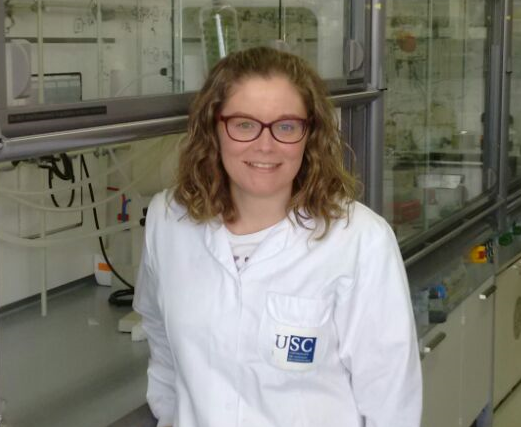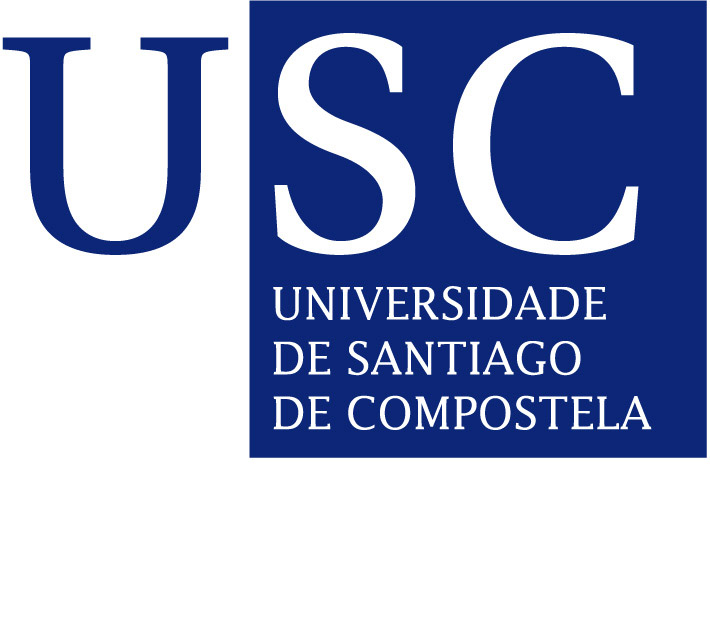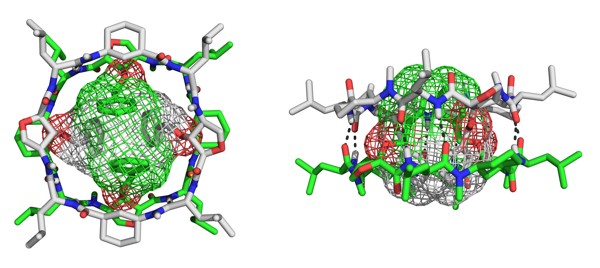This work, entitled “Design, synthesis and study of alpha- γ-cyclopeptides containing gamma-amino acids in the β-carbon", is focused on the preparation of a new family of alfa- gamma-cyclopeptides with a functionalized internal cavity, as well as studying the self-assembly processes involved in the formation of the corresponding supramolecular structures.
 CiQUS PhD student Nuria Rodríguez Vázquez has defended today at the Faculty of Chemistry of the University of Santiago de Compostela her Doctoral Thesis entitled “Design, synthesis and study of alpha- γ-cyclopeptides containing gamma-amino acids in the β-carbon", which has been supervised by professors Juan R. Granja Guillán and Manuel Amorín López.
CiQUS PhD student Nuria Rodríguez Vázquez has defended today at the Faculty of Chemistry of the University of Santiago de Compostela her Doctoral Thesis entitled “Design, synthesis and study of alpha- γ-cyclopeptides containing gamma-amino acids in the β-carbon", which has been supervised by professors Juan R. Granja Guillán and Manuel Amorín López.
This work describes how cyclic peptides formed by alfa- gamma-amino acids adopt a flat conformation that allows them to self-assemble forming tubular structures of nanometric dimensions. Furthermore, they have programmable properties according to the amino acids sequence.
Consequently, the use of γ-amino acids provides a great advantage: it allows modifying the inner cavity of nanotubes without interfering in the processes of self-assembly of the cyclopeptides. The β-carbon is facing inside the channel when the flat conformation is adopted. This internal functionalization is essential for development of applications where the internal channel is used, such as ion or molecular transport, separations or catalysis.
In this context, the thesis focuses on the preparation of a new family of alfa- γ-cyclopeptides with a functionalized internal cavity, as well as the study of self-assembly processes involved in the formation of the corresponding supramolecular structures. Thus, incorporation into the peptide sequence of functionalized γ-amino acids has allowed to develop molecular and ion selective transporters (e.g. Cis-platin derivatives, anions such as chloride, etc.), and sensors for molecular recognition (e.g. methanol, metals, dicarboxylic acids, anions such as carbonate, etc.), therefore demonstrating the potential of changing the internal cavity of peptide nanotubes.



